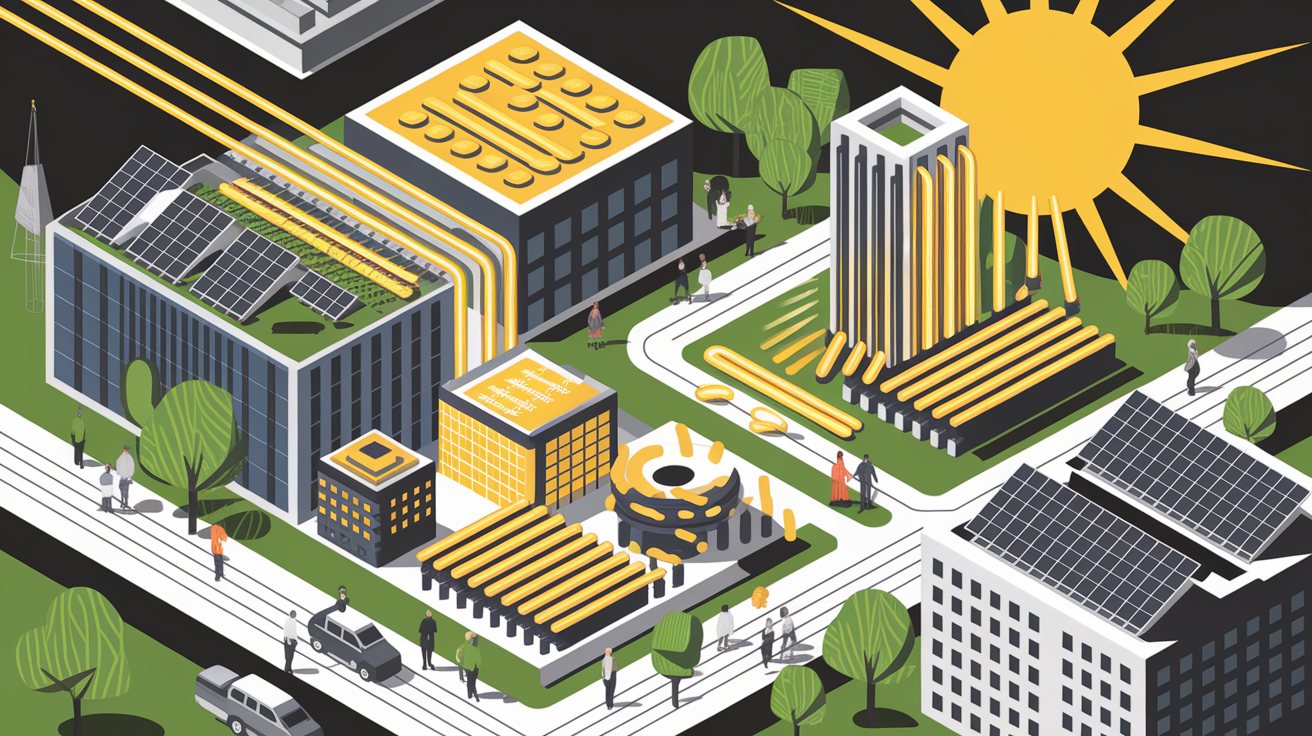Sun-Powered District Heating: A Practical Integration Guide
Warming Up with the Sun
Across Europe and increasingly in other regions, cities are turning to solar thermal collectors to feed their district heating systems. These centralized heating networks, which pipe hot water or steam to multiple buildings for space and water heating, have long relied on fossil fuels or biomass. Now, integration of solar-derived heat is becoming a viable, large-scale solution for renewable energy integration and energy transition.

Solar thermal district heating works by capturing solar irradiance using collector arrays, translating it into usable heat for distribution through a thermal network. This approach has matured significantly since early deployments in the 1980s thanks to improved solar collector efficiency, lower equipment costs, supportive policies, and strong decarbonization objectives. The latest projects aim for carbon neutral heating while optimizing overall energy efficiency in city-scale heating distribution.
The Role of Solar-Thermal in District Heating
In a solar-assisted district heating project, solar collectors generate heat that supplements a network’s existing sources—commonly biomass boilers, geothermal energy, combined heat and power plants and industrial heat recovery systems. By integrating solar thermal energy, operators can reduce fuel consumption during sunny periods, cut greenhouse gas emissions, and provide seasonal support for load-balancing.

Recent field studies, such as work documented by Swedish solar district heating monitoring, show that when designed correctly, solar fractions can reach double-digit percentages of annual heat loads, significantly reducing reliance on conventional fuels.
System Design and Components
A solar thermal district heating system design hinges on matching collector performance to the temperature needs of the heat distribution networks. Most systems operate at medium temperatures suitable for both solar input and DH network requirements. Key components include:

- Solar thermal collectors: Flat-plate or evacuated tube arrays optimized for local solar and weather conditions.
- Heat exchangers: Transfer heat from the collector loop into the district’s thermal grid.
- Thermal energy storage systems: Large thermal storage tanks or seasonal energy storage reservoirs to hold surplus heat for later use.
- Control systems and energy management systems integrated with smart grid technology.
- Hybrid elements such as heat pumps and biomass boilers to ensure stable supply in low-irradiance periods.
Integration with district cooling or low temperature heating can further boost network efficiency and resilience.
Implementation Steps
Rolling out a large-scale solar district heating project involves the following phases:

- Feasibility study: Includes solar resource measurement, temperature requirement assessment, and potential network integration points.
- System design optimization: Balancing collector area, thermal insulation levels, and seasonal energy storage capacity.
- Permitting and policy alignment: Navigating local regulations and leveraging renewable heating incentives.
- Procurement and construction: Installing collectors, piping, and storage; upgrading the thermal grid where needed.
- Commissioning and monitoring: Integrating performance tracking for operational fine-tuning.
Operators typically deploy projects during low-demand seasons to limit disruption to existing heating distribution services.
Economic and Environmental Impact
Economic performance depends on capital cost, fuel savings, and incentives. Although upfront investment can be high, operational cost reductions over decades—and insulation from volatile fuel markets—make solar thermal competitive. Seasonal load balancing using stored solar heat also reduces peak operational costs from conventional fuel sources.
IRENA notes that solar thermal integration can substantially reduce primary energy consumption and CO₂ emissions, particularly when displacing fossil fuels. It also diversifies urban heating supply, enhancing energy security. For building energy systems, benefits include improved efficiency, predictable heating costs, and contribution to sustainable heating solutions at the community level.
Overcoming Common Challenges
Despite proven viability, adoption is often slowed by:
- High upfront capital expenditure compared to conventional boilers.
- Complex retrofitting into established DH infrastructure.
- Lack of awareness among stakeholders and policy inertia.
- Geographical and climatic limitations affecting solar yield.
Drivers to address these barriers include dropping collector costs, demonstrated success in solar district heating case studies, and stronger policy emphasis on renewable heating systems. Cooperative approaches between municipalities, utilities, and technology providers—seen in cases in France and Scandinavia—demonstrate that implementation hurdles can be overcome through clear incentives and stakeholder engagement.
Sunlit Summation
Solar thermal integration into district heating is no longer niche—it is poised to become a mainstream tool in urban energy management. By leveraging large scale solar thermal systems and pairing them with hybrid heating systems, communities can lower emissions, stabilize heating costs, and advance toward decarbonization. With mature technology and growing political will, the question is less about whether solar district heating works, and more about how quickly cities can scale it to meet climate targets.
The energy transition depends on adaptable solutions. As technology advances and storage systems expand, tapping the sun for centralized winter warmth will likely be an increasingly common chapter in the story of sustainable urban living.







